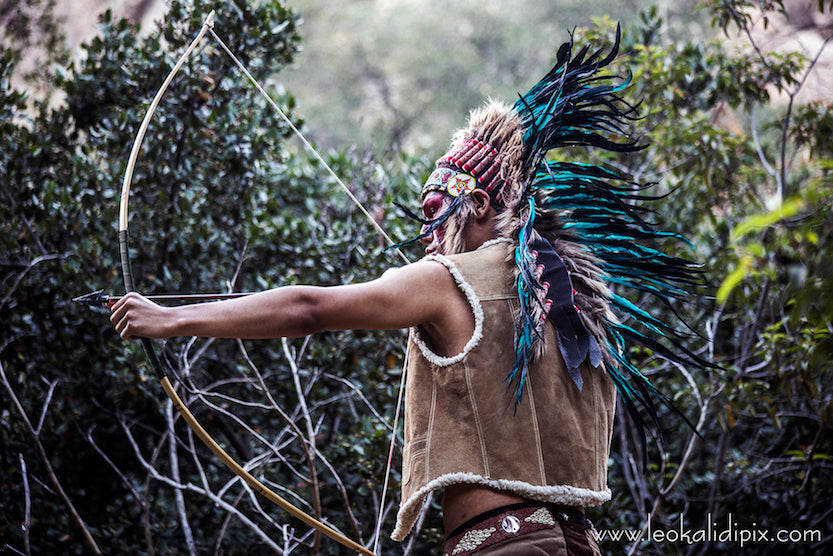



Photographer: Leonardo Kalidi
The Model wears our Black Native American Headdress (75cm) and our Aqua-Colored Native American Headdress (75cm).
Our admiration for Native American headdresses is pretty obvious. However, we would like to highlight enlighten the original meaning behind these and what they´ve meant to the indigenous Indians in the past and present.
The main components of a chief headdress, or a so-called ‘war bonnet’, are the feathers. In the past, brave warriors could earn feathers for exceptional behavior or success in battle. Since it was usually only men that took part in such fights, they were the only ones that could gain feathers and therefore a headdress. Each feather had a special meaning; most of the time a male tribe member earned his first feather when he was officially recognized as an adult within his tribe. Any other feather could be earned if he proved to be a courageous influential warrior. The hero’s best friend would then keep the feathers safe for him until there were enough to create a Native American headdress.
The Sioux are believed to be the first tribe that introduced the Native American headdress. Other tribes followed; however, the feather headdresses always reflected the culture of each tribe, which was what made every war bonnet unique.
The Native Americans would typically use feathers from hawks, crows and eagles, with the most precious one coming from the eagle, as they were extremely hard to get; also Native Americans believed the bird was a messenger of God. The Golden Eagle feather could only be earned by proving loyalty, hardship and strength. The process of getting an eagle feather was quite difficult as the feather had to be removed without hurting the animal, therefore, the Native Americans had to trap the bird and sing to it while removing one single feather at a time.
Native Americans believed that wearing a chief headdress duplicated the powers of the eagle and was a way of gathering wisdom. The war bonnet meant the world to the warrior and was also understood to be an extension and representation of his beliefs.



